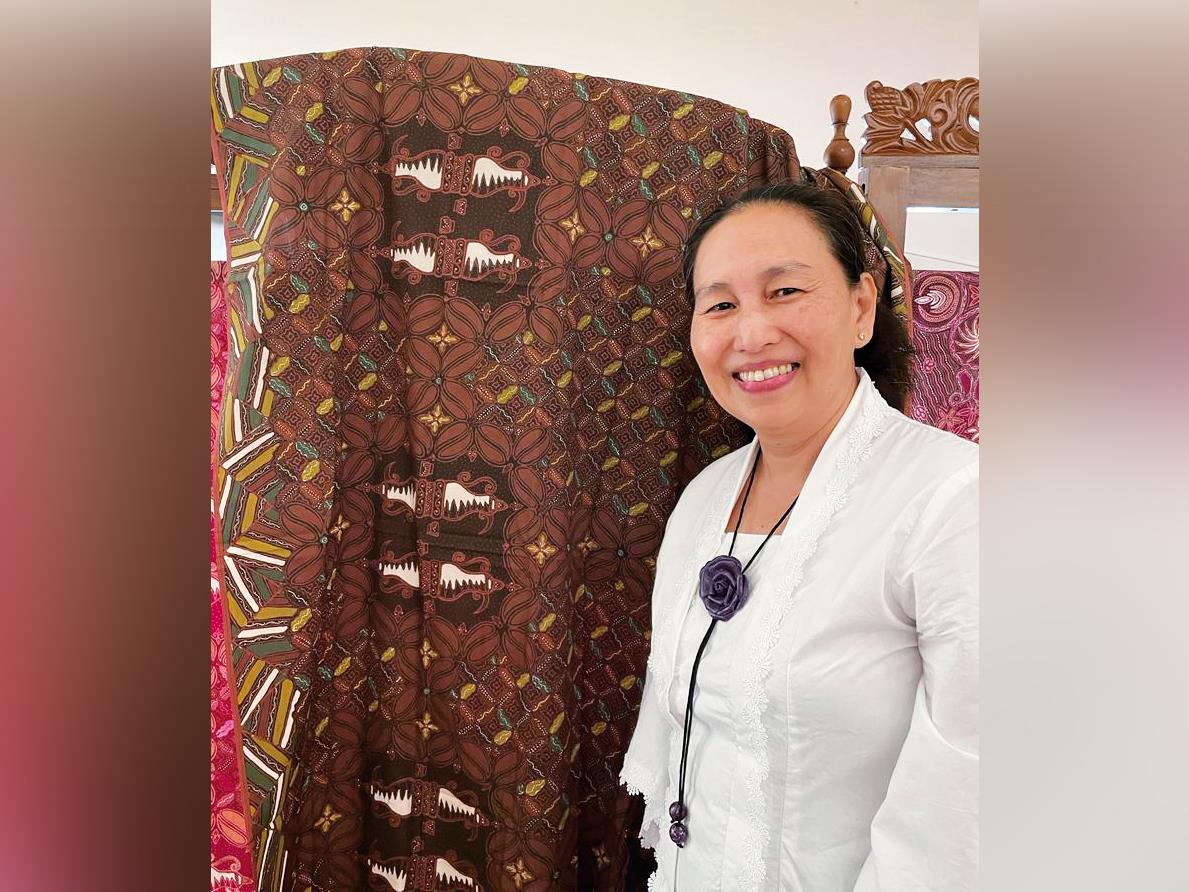
Indonesian Artist Creates Qahwa Batik Design Motif At Nmoq
Doha, Qatar: A special Qahwa batik design motif has taken centre stage at the National Museum of Qatar (NMoQ) as part of the ongoing exhibition,“Growing Kopi, Drinking Qahwa; Stories of Coffee in Qatar and Indonesia.”
This distinctive motif, hand-painted by Indonesian artist Yori Nooraini Atmadi Hartati, is a tribute to the cherished cultural tradition of coffee consumption in the Qatari community, known as Qahwa.
Read Also- 'Qatar's strategy effective in combating impacts of economic crimes' Ecuador showcases agri excellence at Expo ILO, unions urged to take stance for Palestine workers
Hartati explained that the central theme of this batik design motif embodies the iconic teapot with an elongated spout, resembling a bird's beak, known as the“Dallah,” alongside the handleless mini cups referred to as“Fanajin.” In the customary ritual of serving Qahwa, a server, or“Mugahwi,” cradles the Dallah in their left hand, gracefully pouring the aromatic Qahwa into the waiting Fanajin held in their right hand.
She explained that this serving of Qahwa stands as a symbol of the host's graciousness and hospitality.“Qahwa has a unique and authentic flavour because it is made in a special way by blending coffee beans, typically Arabica coffee, with various spices like cardamom, turmeric, and more.”
Hartati elaborated on the motif, stating:“The core motif of this batik is the Kawung motif, symbolising purity, prosperity, and happiness. In this context, the Kawung Kopi and Kawung Kapulaga motif represents coffee beans and cardamom.”
According to Qatar Tourism, Qahwa, the Arabic coffee, occupies a central role within Qatari hospitality, dictating how guests and coffee enthusiasts are welcomed and entertained. Pouring this brew is steeped in tradition, from the choice of serving equipment to the standing position beside the guest and even the sequence in which guests are served – each aspect is laden with significance.
Sharing her creative process, Hartati revealed that it took her three months to complete the Qahwa batik design motif. She explained that Batik, a revered ancestral heritage of Indonesia, epitomises the traditional art of crafting intricate motifs on fabric.“Depending on the complexity of the colouring and design, if the design is more intricate, it requires more time to complete.” She said that the process of creating Batik involves the use of hot liquid wax, setting it apart from other Batik techniques in various countries that may use different methods, like sticky rice.
Batik is a cherished Indonesian tradition representing the art of crafting intricate motifs on fabric. Over the years, these motifs have evolved to carry a multitude of symbols, meanings, philosophical insights, historical narratives, and life lessons. Consequently, Batik has become an integral facet of Indonesian culture and a symbol of its identity, particularly when it's referred to as“Authentic Indonesian Batik” due to its distinct use of hot liquid wax in the production process.
Ambassador of Indonesia to Qatar, HE Ridwan Hassan, stressed the uniqueness of Batik, stating:“You can find different types of textiles with various motifs, but Batik isn't solely about the motifs; it's about the technique, it's art.”
The“Growing Kopi, Drinking Qahwa; Stories of Coffee in Qatar and Indonesia” exhibition, set to run until February of the coming year, also features Hartati's two batik cloths inspired by the joy and camaraderie of coffee-drinking. Moreover, it showcases the traditional canting tools employed to create these motifs on batik cloth using melted wax.

Legal Disclaimer:
MENAFN provides the
information “as is” without warranty of any kind. We do not accept
any responsibility or liability for the accuracy, content, images,
videos, licenses, completeness, legality, or reliability of the information
contained in this article. If you have any complaints or copyright
issues related to this article, kindly contact the provider above.

















Comments
No comment